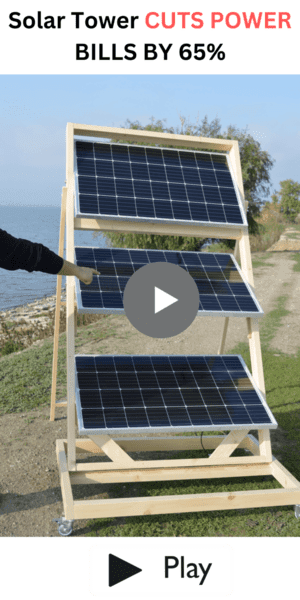Product Name: Solar Innovator System
Creator: Mark Pierce
Price: $39 (can vary)
Availability: Online
Usage: A DIY guide to building a Solar sphere and living off grid
Summary:
It's a guide with plans, a list of parts, and step-by-step instructions to form a solar sphere using 120 DIY monocrystalline solar cells generating 432 output watts.
- Accessibility: 100% thumbs up
- Price: 90% thumbs up
- Quality: 99% thumbs up
- Usability: 95% thumbs-up
Key Features
- A guide with detailed step-by-step instructions to form a DIY Solar sphere
- Low dust accumulation because of sphere structure
- Capture sunlight from different angles maximizing output
- Video demonstrations are present in the program which makes it easier to follow instructions.
- With other sections and bonuses included you are getting more than the actual price of the product.
- Because of its decent size and portable structure, it is easier to handle than commercially available flat solar panels.
Problems Solved:
- A green energy backup source copes with climate change.
- Reduces Electrical bills by outsourcing to solar energy.
- Acquire less space than traditional solar panels.
- Easily transportable.
- Tackles with frequent power outages.
- Make you live off-grid.
- Innovative Device
- Green Energy
- Customizable
- Low cost
- Improves knowledge in the usage of green energy
- You must work on it
- You must have time
- Have to gather the listed items
- Experience in DIY will definitely help
- Must be willing to go green
About the product:
Solar Innovator is a guide that helps you, make a DIY solar project minimizing electric costs, and outsourcing power needs to solar energy.
The author "Mark Pierce" Has come up with an innovative DIY device which is a solar sphere inspired by a housefly.
Just like a housefly has a compound vision seeing through every angle, the author has made a sphere using approximately 120 Mono cells commonly used in a DIY solar panel.
What does it look like?
The solar innovator system is structured as a sphere containing 120 mono-solar cells with an aluminum sheet placed behind it to cover maximum sunlight.
There is a wooden box-like structure below the sphere, a space for an inverter and two lead-acid batteries.
The idea behind this is to capture sunlight from every angle without continuously adjusting the panel angle minimizing energy loss.
Video Review:
My Experience:
After going through the program I would say it's an innovative use of solar energy panels compared to commercially flat-size panels.
The biggest difference is it is portable and consists of more solar arrays .
According to Energy Sage, there are about 60 solar cells in residential panels and about 72 in commercial solar panels whereas in a "Solar innovator system" there are about 120 mono-solar cells used.
And despite more solar arrays, it require less space than regular Solar panels.
Results:
The device uses approx 120 solar cells which have a maximum output of 3.6 watts and a maximum of 0.6 volts per cell. So a single "solar innovator" Sphere can generate 432 watts using 120 solar cells placed in full sunlight.
Who Am I?
I am an MBA graduate with some understanding of electricity and technical stuff as I did my pre-engineering in college.
From the year 2019, I have been learning and increasing my knowledge of solar energy, Finding ways to reduce electric costs by using solar.
Living in a 2700 sq feet house in a country where there are occasional power outages and dealing with Expensive commercial energy has become my sole motivation to start a solar journey.
I love to experiment with innovative DIY solar projects.
I created this blog to learn and share my knowledge on these types of projects and how much it can save on electric costs.
My advice:
Now if you going towards the "solar innovator program" you should have some experience in DIY as the system may require cuttings, drilling, and adjustments to the basic structure.
To build the system the hard part I find is mostly forming the overall base or skeleton of the solar sphere like folding metal rods and making holes for Pop Rivets as mentioned in the program.
Once you have formed the skeleton things are easier with cutting plastic sheets and placing mono cells or solar arrays on top of it.
The author has laid everything out in great detail with Ebooks on tools required and dimensions to cut it as well as videos to demonstrate each step.
If you still find some difficulty you can contact the author through the lifetime Email support available and FAQs that come with the program so no worry there.
My Rating Stats:
- Price a 90% thumbs up as the product is price effective. There are also upsells included with the program but with optional additional costs.
- Accessibility is a 100% thumbs up, Available as an online digital course and can be downloaded on a PC, laptop, or Tablet.
- Quality is a 99% thumbs up, the course is packed with useful information and video guides about Electricity and solar use.
- Usability is a 95% thumbs-up but the DIY aspect may require some experience.
I would give it a total of 4.9 Ratings out of 5.
Features:
Some features of the device after reading and analyzing through the program:
- Portable
- Best for intermediate DIY users
- Has more Mono Solar Arrays than Flat solar panels
- No angular adjustment required
- Low dust accumulation
- Double power generation using reflected solar rays
- Outsource electric needs
- Make your life easier as a off grider
- Can be customized for your own use
- The program has bonus sections and Ebooks
Making of Solar Innovator Device:
Pros and Cons:
After purchasing the program and analyzing each section my pros and cons are:
Pros:
- Device: Portable device
- Solar arrays: Have more solar arrays than conventional panels
- Effectiveness: Having more solar arrays produce more Power compared to flat solar panels
- Cheap: Can be made from recycled solar panel parts
- Save Adjusting time: No angular adjustments for sunlight as compared to flat panels
- Dust: Low dust accumulation compare to flat panels
- Double power: Produce twice energy using reflected rays from aluminum sheet
- Save Power bills: It helps to outsource electric needs and save commercial electric bills
- User-friendly: Customizable according to your power needs
- Availability: Materials are easily available in local stores and online
- Links are given: For every item use links and sources given in the program
- Download Ability: Detailed program with downloadable videos.
- Support: Lifetime support email available from the author
- Bonus: Bonus sections and lots of DIY ideas are given within the program itself
Cons:
- Experience: Good for intermediate DIYer Experience.
- Building Time: Requires some effort to build a support sphere structure.
- Powertools: Need to have experience with power tools
- Search time: Must gather the required tools and materials first
- Free time: Must have free time available to go through the program and start building.
What you will get when you buy the Solar Innovator program?
Buying process:
The product itself is priced at $39 on the official sites below:
After you have purchased the program you will get access to the member's area. Also, note that there are a few upsells present with additional optional costs.
Member's Area:
In the member's area, there are 4 main sections:
1) Download Section
2) Video Course
3) Exclusive Off-Grid Vault
4) Bonus Section
1) Download Section:
In the download section, you will get access to the "Solar Innovator" Ebook.
This section also contains 6 other Ebooks which is a section by breakdown from the original Solar Innovator Guide.
These different downloadable ebooks help you to get access the information quicker like List of tools and materials, dimensions used, the connections of wires, etc.
I find it quite helpful as it prevents information overload and makes it easier to absorb the content.
2) Video Course
The video course section has about 7 video series demonstrating each step physically so you can know how to build the solar innovator sphere much more easily.
These videos are presented with a download link through which you can download on your tablet or laptop follow along as you build the system step by step.
Play with ease at any time and watch again if you miss some steps.
The author has explained each area thoroughly demonstrating how to build the solar innovator system So, you don't get confused and make mistakes.
3) Exclusive Off-Grid Vault:
This section is one of my favorites it contains all the different DIY ideas and information about solar energy and survival Ebooks.
The author adding this section tells that you are given more which you have paid for and I find it quite helpful in increasing my knowledge.
You can acquire all the unique ideas to experiment with and it's like a gold mine for DIY solar lovers.
In my opinion, this section never ends and it has unique information about DIY solar energy and survival techniques So I highly recommend it.
4) Bonus Section
On top of that, there is an additional bonus section or gift from the author containing Knowledgeable guides for going green, and tips and strategies used to save electricity.
Support Section:
Lastly, there is a support section, that contains lifetime email support along with FAQs, if you get stuck with any step in the making you can contact them.
I think that with the addition of guide and video demonstration, you will not find any difficulty in building the system in the first place.
How much Do I save on electricity?
According to Solar.com average bill in the US is around $149 per month and $1788 per year
Let's assume you save 50% on your power bill, your monthly bill would be $74.5 per month and by saving 75% your bills would be around $37.25 i.e. $447 per year.
So you go from $1788 to $447 per year if we go by 75% savings and you can increase this by building and adding more solar innovator devices to the system.
The best thing about "The Solar Innovator" program you can build and customize the system to your power needs.
The better solution is to make more than one device to save as many power bills as possible.
How to connect the solar innovator system to your house?
Below is an image which gives you a visual idea of how can you use this system to connect with your house.
You can build several DIY solar innovator spheres and connect them to a battery bank.
Don't worry if this seems complicated, Everything is explained step by step in the "solar innovator program" on how to make a battery bank along with an inverter and controller switch to power your house
Should you consider buying? :
After purchasing and analyzing each section I would say it's a good product packed with information to save energy, outsource your power needs, and learn about survival in case of a blackout.
key decision-making factors:
- Ease of availability: The items used in the making are easily available online at eBay and Amazon stores at low cost.
- Cheap solar cells: Recycled solar cells can be used in making which are much cheaper and reduce the overall cost of the system.
- Double power: The system due to its spherical body captures reflected light from the back doubling the energy generation from the sun.
- Low dust Accumulation: Due to its spherical shape it eliminates the risk of dust accumulation compared to flat panels hence improving solar energy generation.
- Saving Bills: Saves 75% to 80% of power bills by outsourcing to solar energy
- Realtime Access: Instant availability in real-time as the product is digital and downloadable
- Lifetime access: to an Exclusive Off-Grid Vault Package containing valuable information regarding DIY solar energy ideas, usage, and survival strategies in case of a blackout and long power outtages.
- Onetime: At a one-time cost of $39, you are getting a lot of unique information as well as video guides and a solar system reducing your power bills by 50% to 75%, saving you thousands of dollars in the long run.
The bottom line is that "Solar Innovator System" is a worthy program with a money-back guarantee so there is no risk involved with lifetime email customer support and bonus sections included.
Frequently Asked Questions
Is solar innovation Difficult to make?
No, it's not that difficult. If you have some experience in DIY you can build easily furthermore the author has simplified each step with video guides So you won't be stuck at any point.
Will this work for me?
Yes, it works Solar innovator system like any other solar device uses solar cells that produce energy. Your power needs might be different and you can make the device bigger or increase the quantity of devices according to your power needs and customize it.
What if there is a shaded area?
Due to the use of an aluminum sheet and its spherical shape, it is built to capture sunlight from different angles and uses reflected light maximizing the output
What if I have a low space area?
Solar Innovator is designed to accumulate less space compared to traditional commercial solar panels but if you are living in a flat or smaller space it might bring some problems. Thanks to its ability of customization you can build the design smaller to fit into your available space area.
Where to purchase it?
You can visit below and purchase the official Solar Innovator System Try out and experiment with it.
Get Access to Solar Innovator System here

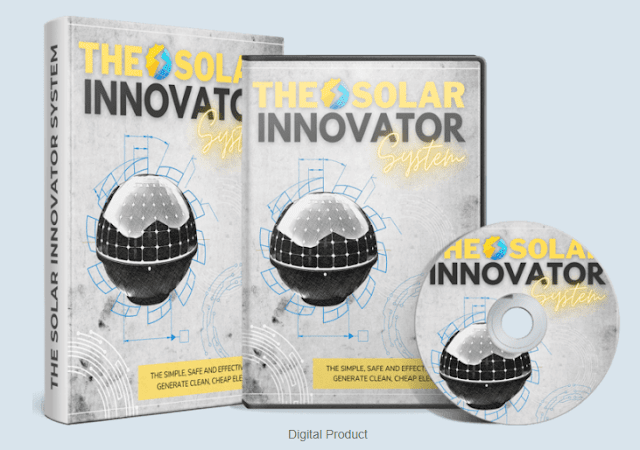



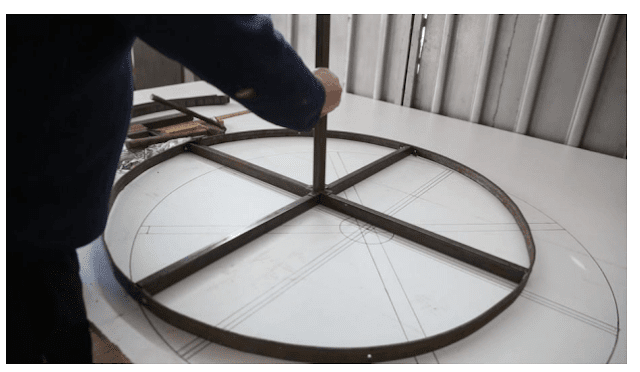






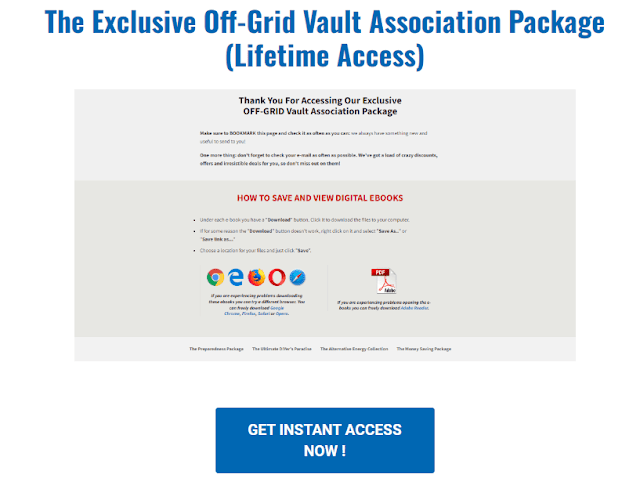


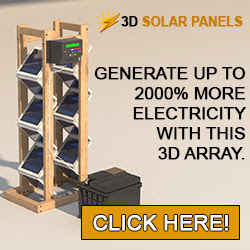
.PNG)
